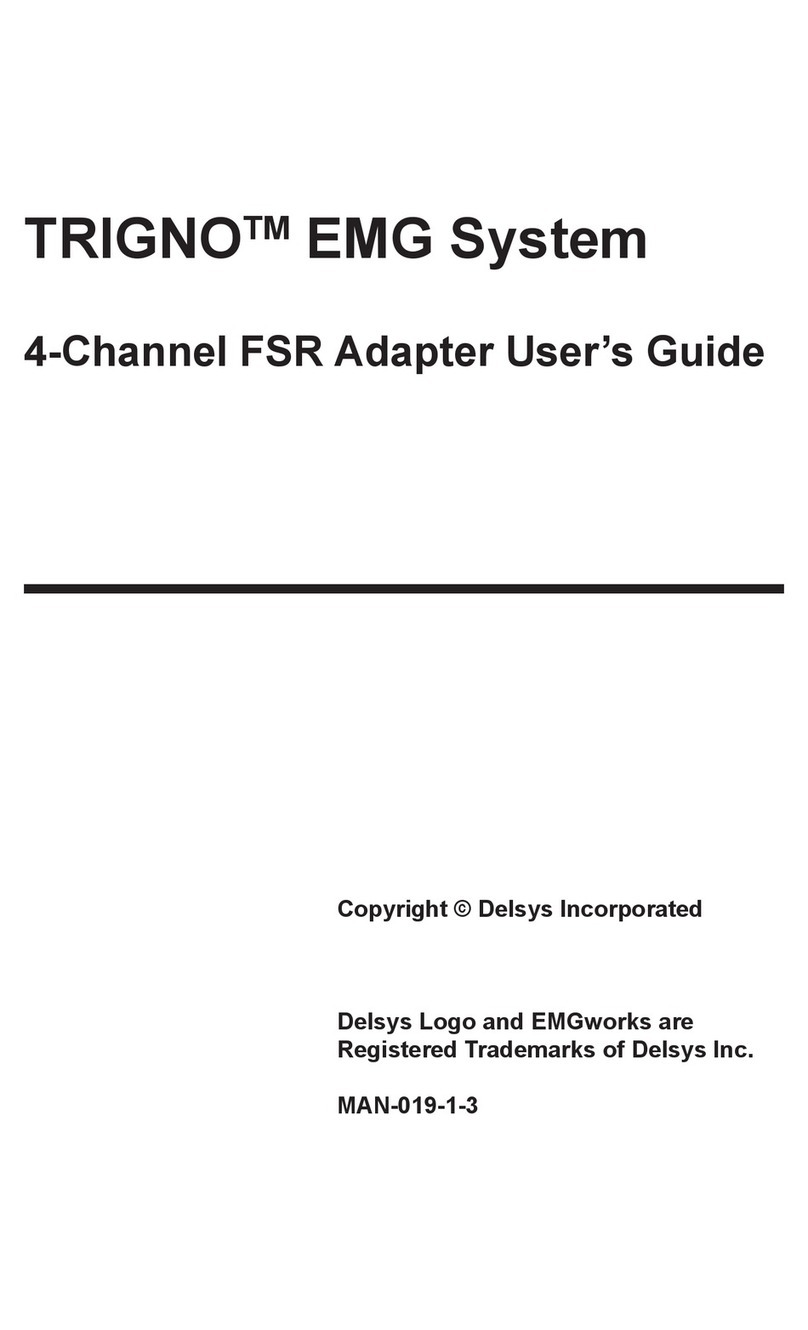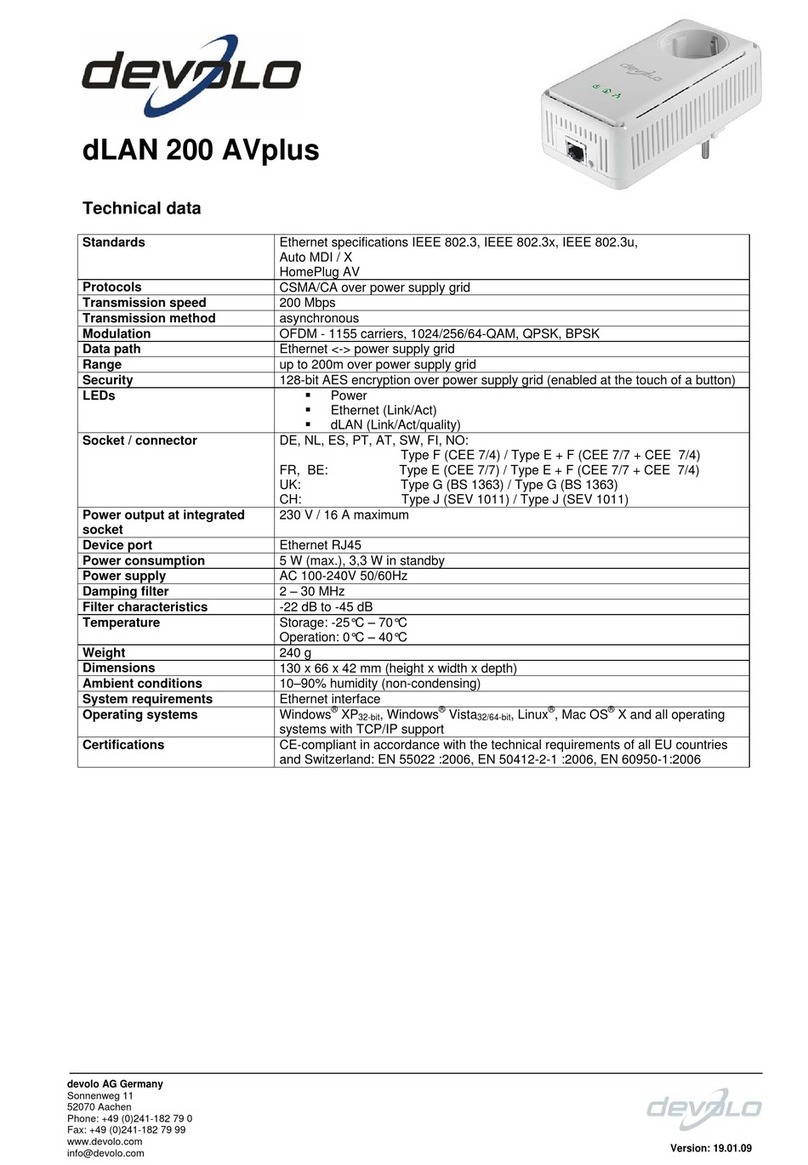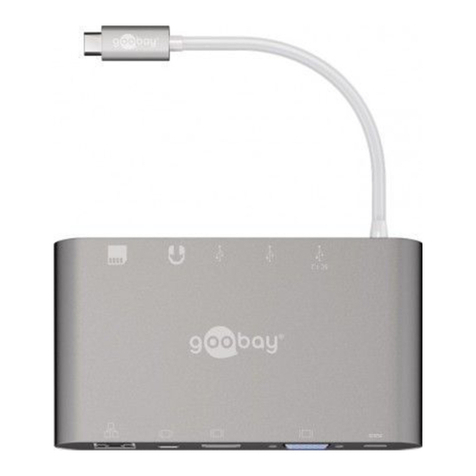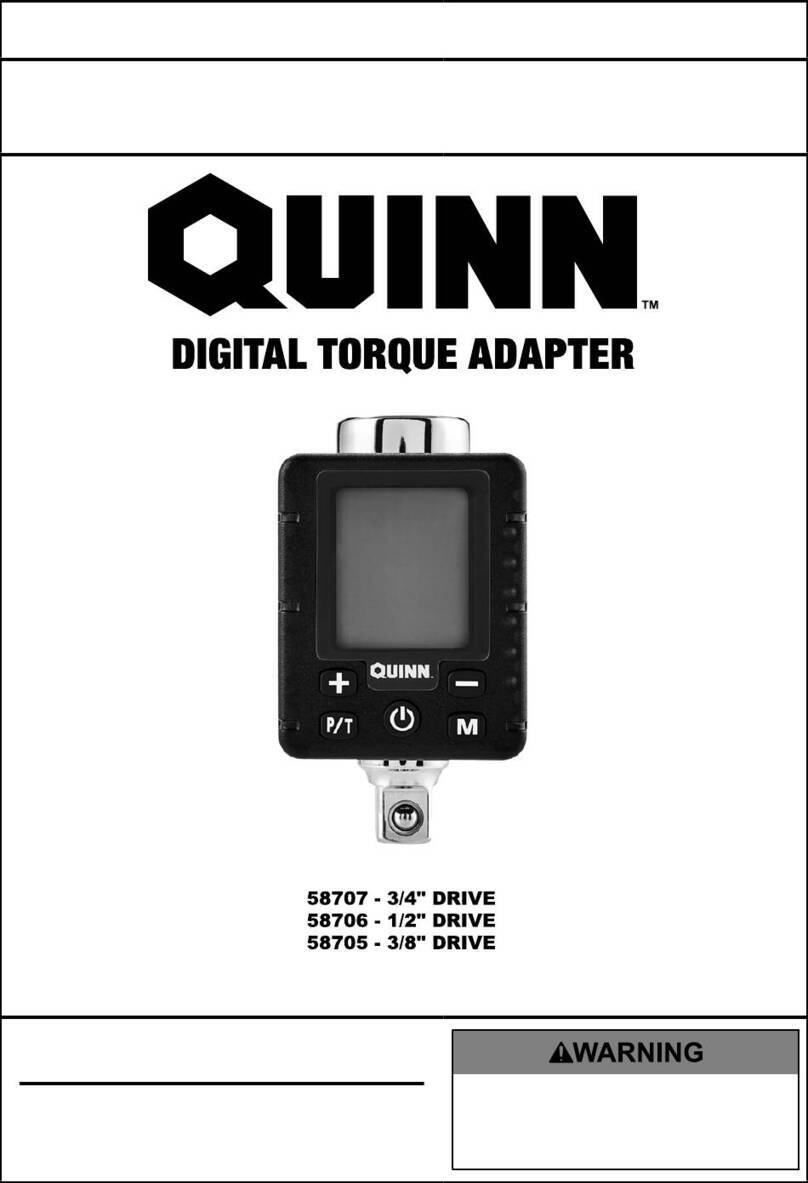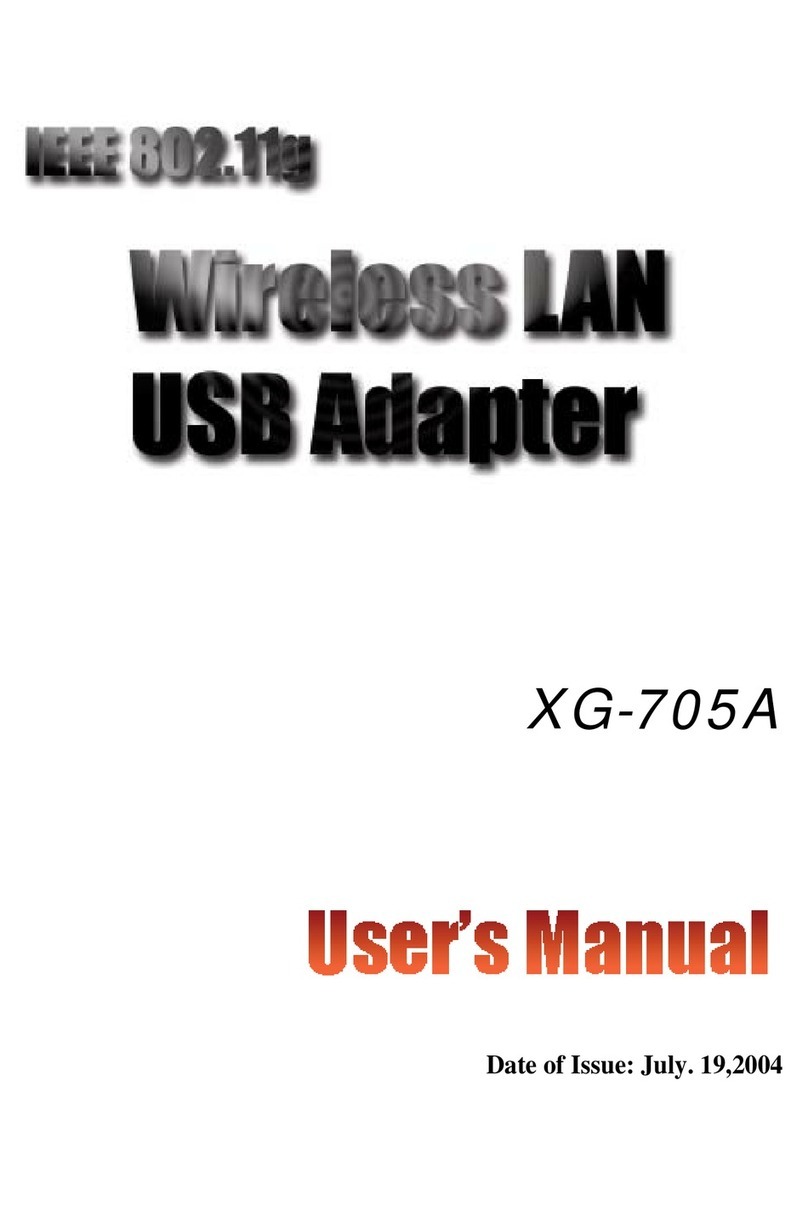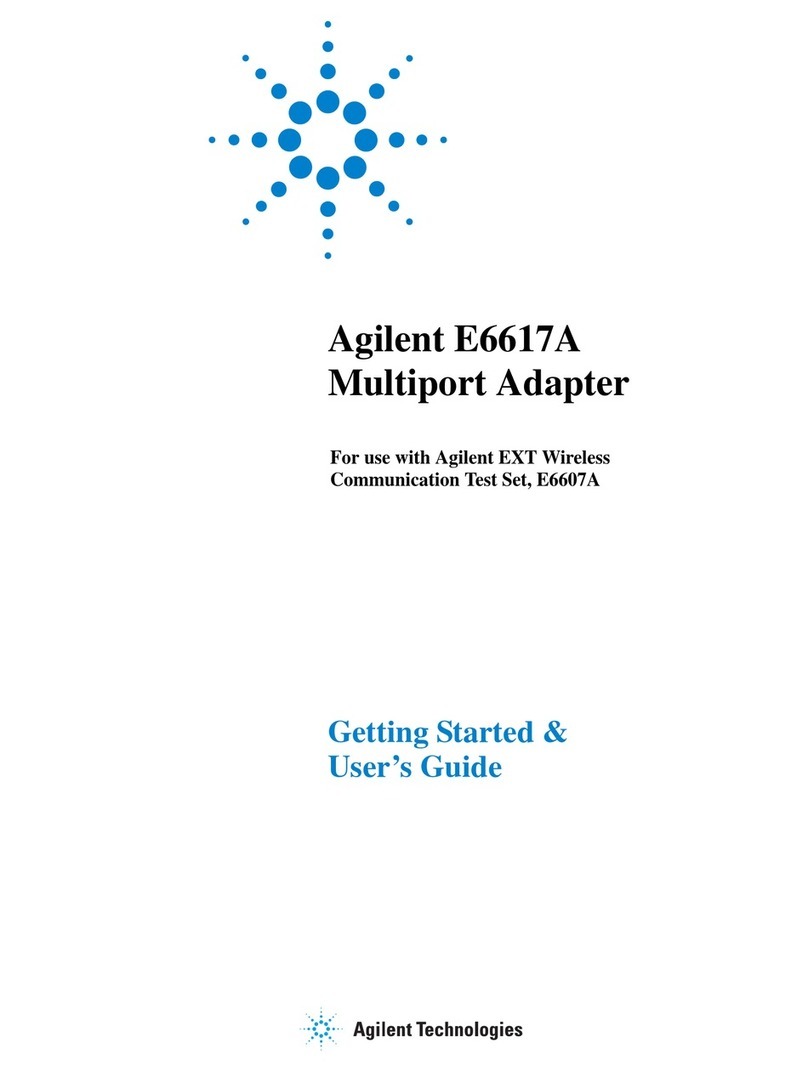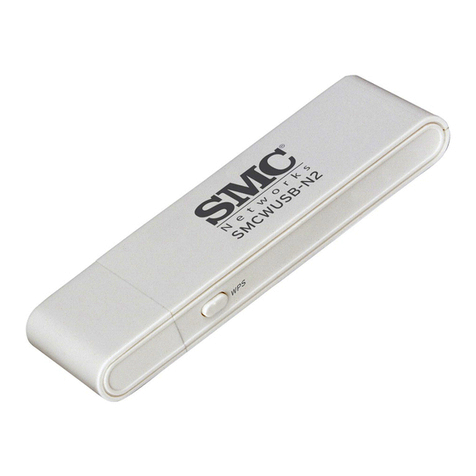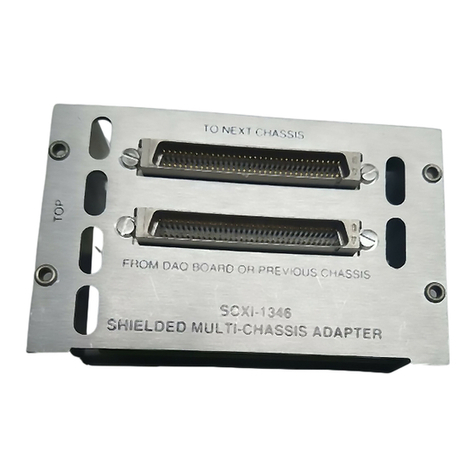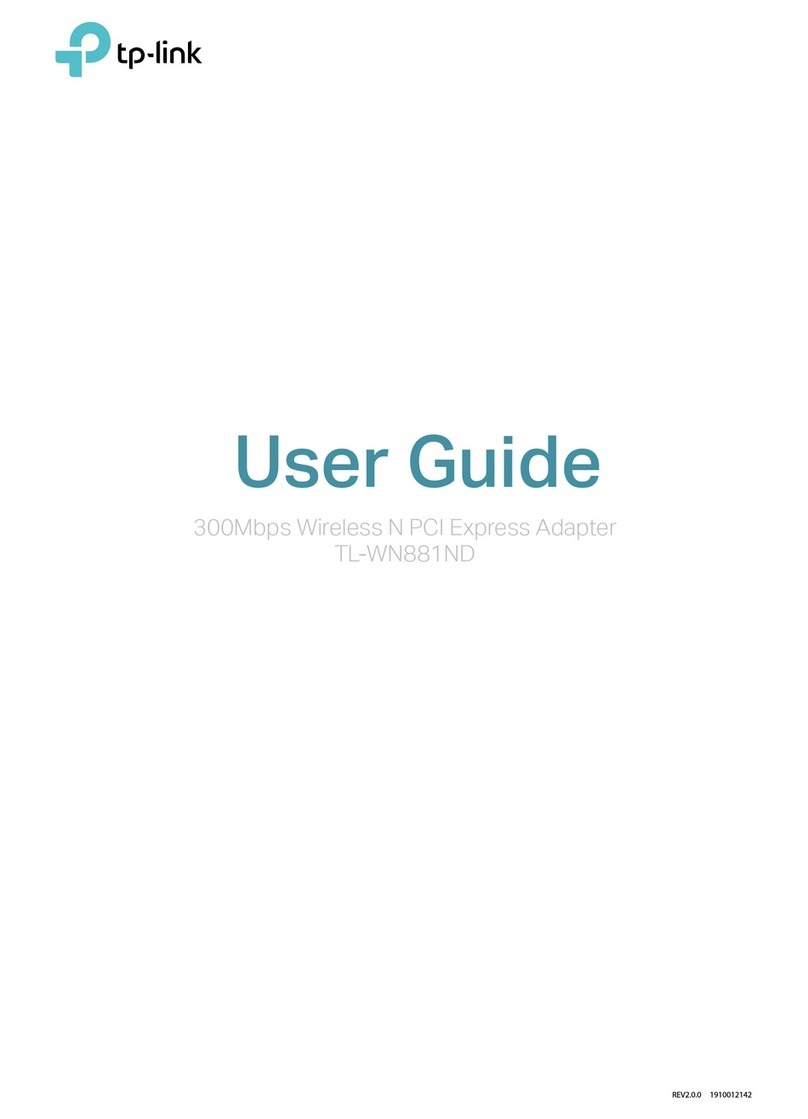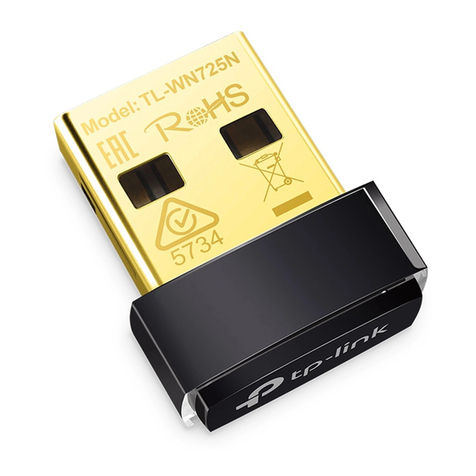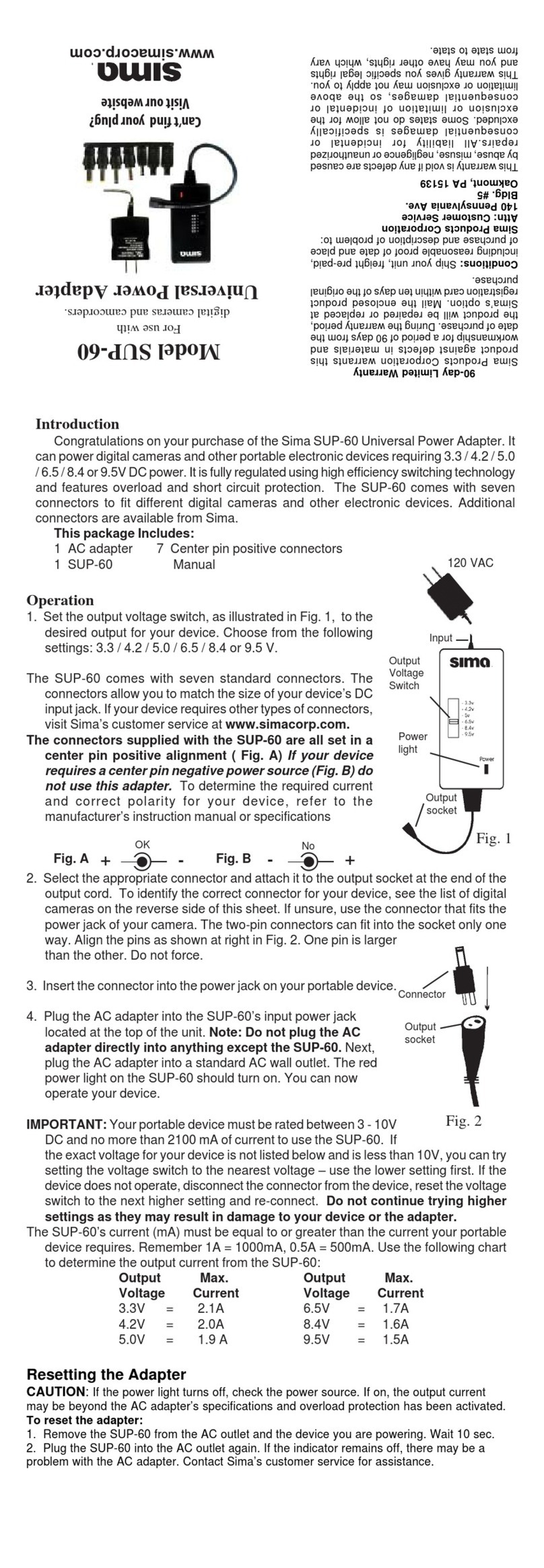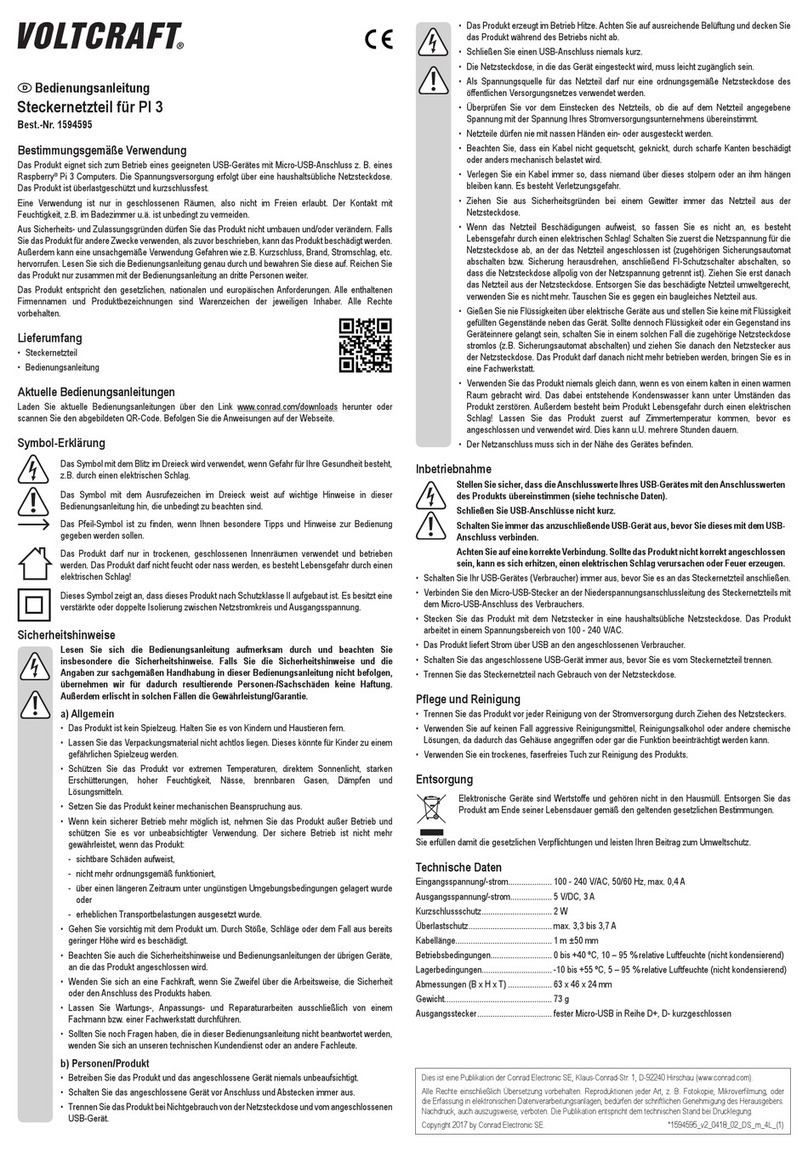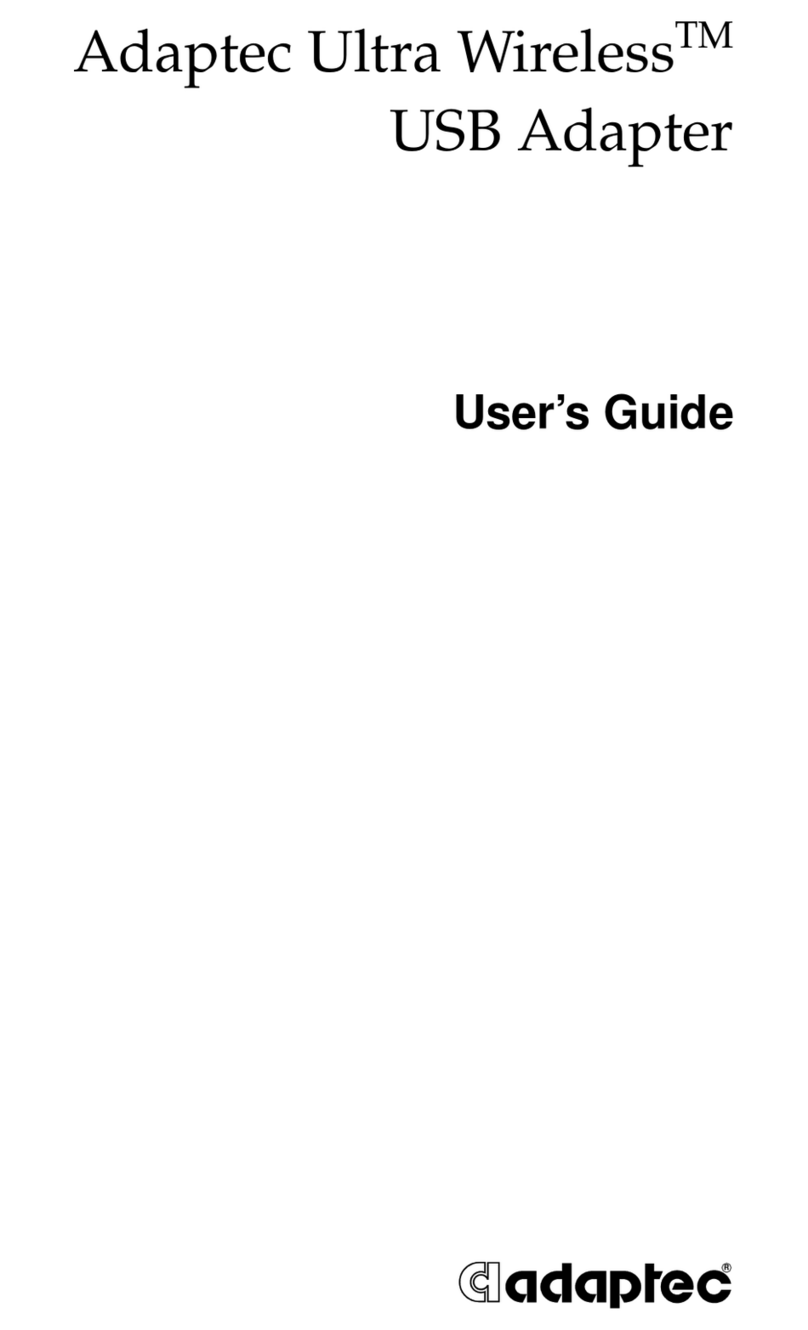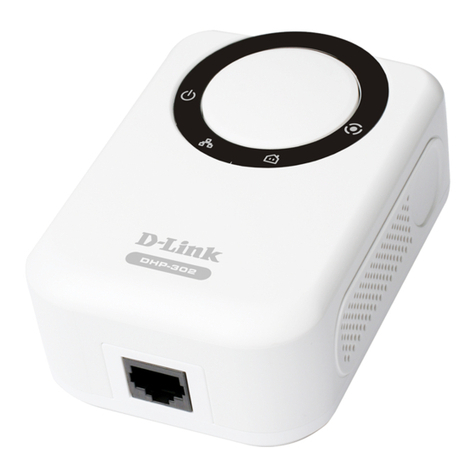Delsys TRIGNO User manual

TRIGNOTM EMG System
Copyright © Delsys Incorporated
Delsys Logo and EMGworks are
Registered Trademarks of Delsys Inc.
MAN-015-1-3
Spring Contact Adapter User’s Guide


Trigno Spring Contact Adapter User’s Guide
Table of Contents
Important Information 4
Intended Use 4
Technical Service and Support 4
Warnings and Precauons 5
Device Informaon 6
Disclaimer 8
System Requirements 8
Spring Contact Adpater Overview 9
Using the Sensors 10
Charging the Sensors 10
Sensor Pairing 11
Smart Sensor Features 12
Applying the Spring Contact Adapters 13
Maintenance and Care 15
Specications 17

Trigno Spring Contact Adapter User’s Guide4
Important Information
Intended Use
e TrignoTM Wireless EMG Systems are battery-powered bio-
feedback devices that enable researchers and clinicians to acquire
EMG and related signals from subjects for biofeedback purposes.
ey are intended for relaxation training and muscle reeducation.
Interpretation of the EMG and supporting signals by a qualied
individual is required.
Rx ONLY
DO NOT USE on Patients with implanted electronic devices of
any kind, including cardiac pace-makers or similar assistive de-
vices, electronic infusion pumps, and implanted stimulators.
DO NOT USE on irritated skin or open wounds.
DO NOT USE on Patients with allergies to Silver.
DO NOT USE in critical care applications.
Technical Service and Support
For information and assistance visit our web site at:
www.delsys.com
Contact us at:
telephone: (508) 545 8200
email: [email protected]

5TrignoTM EMG System
Warnings and Precautions
Consult all accompanying documents for precautionary state-
ments and other important information.
Consult accompanying user’s guide for detailed instructions.
Keep the device dry. e device is not waterproof and should not
be submerged under any circumstance. e ingress of liquids may
compromise the safety features of the device. e device is not
intended for use under high sweat conditions. Situations which
may result in the entrapment of sweat around the sensors must be
avoided.
Handle with care. Trigno sensors and instruments are precision
devices and not designed for excessively rugged use. Carefully in-
spect devices prior to each use to ensure that no mechanical dete-
rioration has occurred.
Sensitive electronic device. Avoid static discharges. Do not oper-
ate or store near strong electrostatic, electromagnetic, magnetic or
radioactive elds. Interference from external sources may decrease
the signal-to-noise ratio or result in corrupted data.
Connect only to Delsys-approved devices.
Connecting a patient to high-frequency surgical equipment while
using Delsys EMG systems may result in burns at the site of the
EMG sensor contacts.
Immediately discontinue device use if skin irritation or discomfort
occurs.
Immediately discontinue device use if a change in the device’s
performance is noted. Contact Delsys technical support for as-
sistance.
Delsys Inc. guarantees the safety, reliability, and performance of
the equipment only if assembly, modications and repairs are
carried out by authorized technicians; the electrical installation
complies with the appropriate requirements; and the equipment
is used in accordance with the instructions for use.

Trigno Spring Contact Adapter User’s Guide6
Device contains a Lithium-Polymer battery. Do not damage,
crush, burn, freeze, heat or otherwise mishandle the device. Re-
charge only with the approved power supply and recharger. Sen-
sors should be charged at least once every 3 months to prevent
battery damage from excessive self discharge. Extended periods
in the discharged state may damage the internal lithium polymer
cell.
Trigno Systems should be stored and operated between 5 and 40
degrees Celsius due to the presence of an internal Lithium Poly-
mer rechargeable cell. Storing or operating the device, and conse-
quently the cell, outside of this temperature range may compro-
mise the integrity and the safety features of the cell.
Device Information
Complies with Requirements put forth by the Medical Device Di-
rective 93/42/EEC. Class I device, Annex VII.
Type BF device (IEC 60601-1).
Isolated device, (Class II, IEC 60601-1)
Do not dispose this product with house waste. Contact Delsys
Inc. for instructions on responsibly disposing this device. is
product should not be mixed with other commercial wastes.
Date of Manufacturing (appears on device)
Serial Number (appears on device)
EMERGO EUROPE
Prinsessegracht 20
2514 AP The Hague
The Netherlands
Authorized Representative Manufacturer
DELSYS INC.
23 Strathmore Rd.
Natick MA 01760
USA

7TrignoTM EMG System
FCC ID: W4P-SP-W03 (Trigno Body Worn Receiver)
FCC ID: W4P-SP-W01 (Trigno Sensor)
FCC ID: W4P-SP-W05 (Trigno Sensor)
IC: 8138A-DST02 (Trigno Personal Monitor System)
is device complies with Part 15 of the FCC Rules and Indus-
try Canada’s RSS-210 License Exempt Standards. Operation is
subject to the following two conditions: (1) is device may not
cause harmful interference, and (2) this device must accept any
interference received, including interference that may cause un-
desired operation.
is product complies with FCC OET Bulletin 65 radiation ex-
posure limits set forth for an uncontrolled environment.
Pursuant to Part 15.21 of the FCC Rules, any changes or modi-
cations to this product not expressly approved by Delsys Inc.
might cause harmful interference and void the FCC authorization
to operate this product.
To reduce potential radio interference to other users, the antenna
type and its gain should be so chosen that the equivalent isotropi-
cally radiated power (EIRP) is not more than that required for
successful communication.
is equipment has been tested and found to comply with the
limits for a Class B digital device, pursuant to Part 15 of the FCC
Rules. ese limits are designed to provide reasonable protection
against harmful interference in a residential installation. is
equipment generates, uses, and can radiate radio frequency energy
and, if not installed and used in accordance with the instructions,
may cause harmful interference to radio communications. ere
is no guarantee that interference,will not occur in a particular in-
stallation. If this equipment does cause harmful interference to
radio or television reception, which can be determined by turning
the equipment o and on, the user is encouraged to try to correct
the interference by one or more of the following measures:
• Reorient or relocate the receiving antenna.
• Increase the separation between the equipment and receiver.
• Connect the equipment into outlet on a separate circuit.

Trigno Spring Contact Adapter User’s Guide8
Disclaimer
DELSYS INC. makes no warranties, express or implied, as to the
quality and performance of this product including but not limited
to, any implied warranty of applicability for other than research
uses by qualied individuals. DELSYS INC. shall not be liable to
any person for any medical expenses or any direct or consequential
damages resulting from any defect, failure or malfunction, wheth-
er a claim for such damages is based upon theory of warranty,
contract, tort or otherwise. No representative, agent, or licensed
practitioner is authorized to waive this disclaimer. DELSYS INC.
makes no diagnosis or prescription by virtue of anything about
this product.
Delsys provides the Trigno Spring-Contact Adapter per request of
the Client and makes no assertions or recommendations on the
type of recording electrode to use, or the method of its applica-
tion. is responsibility befalls the electrode manufacturer, the
Client performing the study and the Institutional Review Board
overseeing the study.
System Requirements
e Trigno Spring Contact Adapter is designed to be used with
Trigno Wireless EMG Systems.

9TrignoTM EMG System
e Trigno Spring Contact Adapter is an accessory to the Trigno
EMG System for these Researchers wishing to detect EMG sig-
nals with alternative methods to those provided by the Trigno
standard contact approach. e main sensor body uses the 4
silver contacts to establish a local electrical reference from which
to measure the EMG signals detected by the spring contacts.
e sensor body includes an onboard ± 1.5g/±6g accelerometer.
Spring Contact Adpater Overview
Figure 1. Spring Contact Adapter- The main body hosts 4 con-
tacts for establishing a local reference, and include an on-board
±1.5g/±6g accelerometer.
spring contacts
recharge contacts
LED status
indicator
power button
reference contacts
sensor head sensor body

Trigno Spring Contact Adapter User’s Guide10
Charging the Sensors
Connect the Trigno power supply to the circular DC jack lo-
cated on the side of the Trigno Base/Recharge Station. Energize
the power supply by connecting it to a Mains outlet. Be sure to
use the appropriate plug adapter for your location. Ensure that
the Trigno sensors are properly tted in the recharge pockets.
e sensor LEDs will illuminate to amber during charging and
green when charge is complete. e recharge unit will periodi-
cally check sensors and apply a top-o charge to ensure that the
battery is kept at full capacity during extended periods of stor-
age, as long as power is connected.
Figure 2. Connecng the SC-P05 power supply to the Sensor
Charge Staon.
Using the Sensors

11TrignoTM EMG System
Sensor Pairing
Trigno sensors communicate with a custom wireless protocol
that links each sensor to the active Trigno network is linking
process is known as sensor “pairing”, and is initiated through the
“Pair” command in EMGworks.
1. Turn sensor on by depressing the sensor button.
2. Initiate sensor pairing in software.
When using EMGworks, initiate pairing by right-clicking the
Trigno hardware icon in the system notication area, and select-
ing the appropriate menu item.
Figure 3. Invoking the Pair command. Right click on the Trigno
icon in the system tray (le) and select the desired channel to
pair to (right).
3. Complete the pairing process by depressing the desired sen-
sor button for a minimum of 3 seconds. Successful pairing will
result in 3 green LED ashes on the sensor, and a conrmation
message in the software.
Figure 4. Pushing the sensor buon to complete the pairing
task.

Trigno Spring Contact Adapter User’s Guide12
Trigno systems are shipped with all sensors appropriately paired.
Sensor pairing is typically needed in the following situations: a)
if sensors are being replaced within the network group, b) when
the communication frequency sets are changed, and c) after a
rmware upgrade is performed.
Upon pairing sensors, EMGworks will present the option to en-
ter a “Delsys Factory Calibration” sequence or to use the “Auto-
Detected Calibration”. Select the “Auto-Detected Calibration”
option unless the sensor is specically supplied with a calibration
key (this is not common). Note that if the sensor is being paired
for the rst time with the base station, the choice will read “Use
Default Calibration” rather than “Use Auto-detected Calibra-
tion”.
Figure 5: The calibraon can be auto-detected, or manually re-
trieve..
Smart Sensor Features
After pairing, the association of sensors to the Trigno System is
retained for all future uses. Any conguration in EMGworks can
be made to reect the last paired set of sensors by clicking the
“Refresh Smart Sensors” button in the “Add Sensors” pane in
EMGworks. When data collection starts, the software will verify
that the sensors currently communicating match those used in
the conguration. If there is a mismatch, cancel the recording
and repair the sensors.
e Spring Contact Adapter will appear with a unique icon
shown below in EMGworks once it has been properly paired
and identied.

13TrignoTM EMG System
1
Pair
B
Please refer the Trigno EMG System User Guide for further de-
tails on system and sensor operation.
Applying the Spring Contact Adapters
2) Apply one 4-slot interface to the sensor body taking care to
align the slots so that all 4 contacts are visible and one 2-slot
interface to the sensor head, on the opposite side of the spring
contacts.
1) Identify the 2-slot adhesive interfaces to be used with the
spring-contact sensor head and the 4-slot adhesive interfaces to
be used with the sensor body.
2-slot interface 4-slot interface
Figure 6. Trigno Spring Contact
Adapter icon appearing in EMG-
works, idened as a type “B”
device. (Note that the icon may
appear dierent than shown.

Trigno Spring Contact Adapter User’s Guide14
3) Peel o the liners to expose the second adhesive surface of
the interfaces and apply these to the skin. Ensure that the refer-
ence contact location is appropriately prepared for optimal sig-
nal quality.
Adhesive Sensor Interfaces are for single use only.
Immediately discontinue use if skin irritation or discomfort
occurs. All Adhesive Sensor Interfaces are for single use only.
Discard after using. Reseal storage bag to maintain freshness.

15TrignoTM EMG System
Maintenance and Care
Trigno sensors are encased in a sealed polycarbonate enclosure.
e following points should be kept in mind when handling the
sensors.
• All sensors should be visually inspected before each use to en-
sure that no mechanical deterioration has occurred.
• e sensors can be cleaned with 70% isopropyl alcohol swabs.
Ensure that the sensor contacts remain clean at all times for
proper operation.
• e sensors are not waterproof and should not be submerged
in any liquids under any circumstance. e ingress of liquids
may compromise the safety features of the device. ese devic-
es are not intended for use under high-sweat conditions, where
the accumulation or the entrapment of sweat can expose the
sensor to sustained levels of dampness.
• e sensor contacts are made of pure silver and are quite soft.
Care should be taken to preserve the integrity of these con-
tacts. Do not scrape or dent these contacts.
• Handle the sensors with care: do not drop them on the ground
or step on them.
• e cable connecting the MiniHead sensing element to the
sensor body is designed to be supple and unobtrusive while
being worn. Take care to never pull device by the cable, or
excessively stress this cable as this may result in cable damage.
Inspect the device prior to each use to ensure that not deterio-
ration has occurred.
• Battery duration is a function of battery age and charge/dis-
charge conditions. Optimal battery performance is obtained
when the device is operated at room temperature. Excessive
heating (above 40 deg. C) or excessive cooling (below 5 deg.
C) may damage the internal battery. Contact Delsys Techni-
cal support if the device is exposed to temperatures outside of
these limits.
• e device battery capacity is typically expected to decrease to
80% of it’s original capacity after 300 charge/discharge cycles.

Trigno Spring Contact Adapter User’s Guide16
Batteries will self-discharge with time if unused. Excessive
self-discharging may damage the battery. Periodically charge
the sensors at least once every 3 months, to extend battery life.
Do not submerge the sensors in any liquid under any cir-
cumstance.
e sensors contain sensitive electronic circuitry. Static dis-
charges and intense magnetic elds should be avoided to pre-
vent the risk of irreparable damage to the sensors.

17TrignoTM EMG System
Specications
Typical Operating Range(1) 20 m
RF Frequency Band 2400-2483 MHz (ISM band)
Power Consumption <65 mW
Effective Radiated Power 9 mW
RF Protocol Proprietary
Enclosure Dimension (main sensor) 27 x 37 x 15 mm
MiniHead Dimension 25 x 12 x 7 mm
Head Cable Length 200 mm
Full-charge Operation Time(2) 7 hours (typical)
Recharge Time(3) <2.5 hours
Auto Shut-down timer 300 seconds
Temperature Range(4) 5 - 40 degrees Celsius
Signal Range 11 mV (r.t.i)
EMG Channel Bandwidth 20 ± 5 Hz, >40 dB/dec
850 ± 100 Hz, >80 dB/dec
ACC Channels Bandwidths DC - 50 ± 5 Hz, 20 dB/dec
EMG Channel Sampling Rate 2000 samples/sec, 1925.93 samples/sec*
Accelerometer Sampling Rate 148.1 samples/sec/axis
EMG Channel Resolution Depth 16 bits
Accelerometer Resolution Depth 10 bits
EMG Channel Noise(5) <0.75 uV (rms), r.t.i.
Accelerometer Range ± 1.5g, ± 6g
Accelerometer Noise 0.007g (rms, ± 1.5g)
0.024g (rms, ± 6g)
Accelerometer Offset Error
±0.201g (XY, 1.5g)
+0.201g / -0.343g (Z, 1.5g)
±0.052g (XY, 6g)
+0.052g / -0.088g (Z, 6g)
(1) Range is characterized in open ofce environments. Interfering RF sources in the 2.4 GHz spectrum,
as well as absorptive objects occluding the RF communication path may degrade transmission dis-
tance. Stated range can be exceeded under favorable RF conditions.
(2) Battery duration is a function of charge and discharge conditions. Optimal battery performance is
obtained when the device is operated at room temperature. Note that the stated Operation Time
reects the expected performance of a fully charged new battery used in a sensor that is transmitting
data. Operation Time is expected to decrease as a function of charge cycles, and when the sensor is
searching for a network.
(3) 80% of original battery capacity is maintained after 300 discharge/recharge cycles or after 2 years if
recharge cycles are less than 300. These values represent typical expectations under normal condi-
tions. Actual performance will vary depending on usage conditions.
(4) Operation beyond these temperature limits may damage the rechargeable battery.
(5) Input-referred noise is calculated as a root mean square over a 3 second window sampled at 1926 kHz.

Trigno Spring Contact Adapter User’s Guide18
This page has been intenonally le blank.
Other manuals for TRIGNO
5
Table of contents
Other Delsys Adapter manuals
